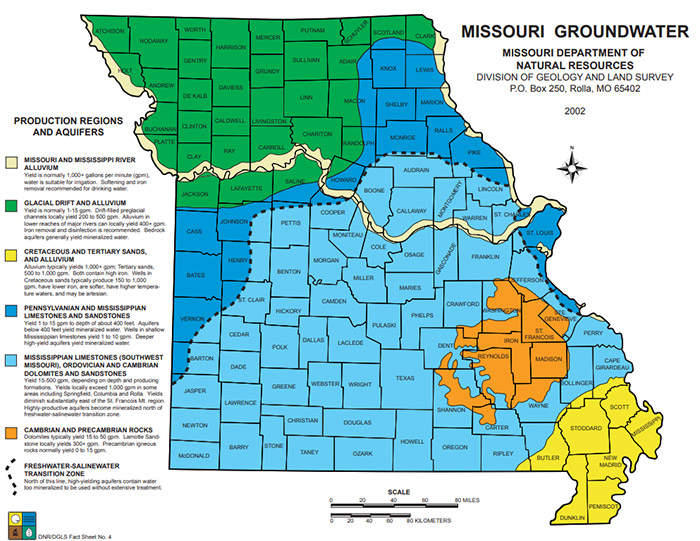Excerpted from the Environmental Impact of Missouri Crop Production report
Missouri is a riparian water law state, so landowners may reasonably use water sources that are touching or underneath their land. Under this law, a landowner can withdraw as much water as needed as long as the withdrawals do not adversely impact the water use of other individual water users.
Missouri is a water-rich state with both the Missouri and Mississippi rivers and an average annual rainfall of 43 inches. High-yielding dryland crop production is common in much of the state. Water for irrigation and livestock tends to be from surface water or shallow groundwater sources. This allows Missouri farmers to have low pumping costs.
Missouri has significant groundwater production regions and aquifers, as shown below. The dotted line delineates the freshwater-saline water transition zone. North of this line, high-yielding aquifers contain water too mineralized to be used without extensive treatment. The light blue area south of the line contains most of the deep wells used for crop and livestock production.
Missouri groundwater production regions and aquifers

Source: Missouri Department of Natural Resources